Classic Italy tours
Venice, Como and the lakes | Cremona, Mantova, the Alps, Ortisei, Val Gardena | Pisa, Assisi, Siena, Florence, S. Gimignano | The Amalfi Coast and Isle of Capri | The Magical South and Sicily
Venice, Como and the lakes
Tour suggested of 7 days and 6 nights starting from Rome, with the visit of Siena, Florence, Pisa, Milano, Lake of Como, Verona, Venice and Assisi or vice versa, the service is driver/guided and is individually personalized.
Venice, Como and the lakes | Cremona, Mantova, the Alps, Ortisei, Val Gardena | Pisa, Assisi, Siena, Florence, S. Gimignano | The Amalfi Coast and Isle of Capri | The Magical South and Sicily
Venice, Como and the lakes
Tour suggested of 7 days and 6 nights starting from Rome, with the visit of Siena, Florence, Pisa, Milano, Lake of Como, Verona, Venice and Assisi or vice versa, the service is driver/guided and is individually personalized.
| 1st Day: Siena. We will start the tour from Rome drive through the regions of Lazio, Umbria and Tuscany. Siena is reknowned, both nationally and internationally, for the Palio horse race contested by the 17 contrada which divide this small city. But Siena is also unique thanks to its maze of narrow streets, its numerous towers and elegant town houses, the immense Piazza del Campo and the Cathedral which dominate the heart of the Medieval city encircled by impressive walls. Those living in Siena enjoy an incredibly high quality of life. It is also the first city in Italy to close its center to traffic. As far as culture is concerned, Siena has been a city of great artistic significance since ancient times with internationally acclaimed institutions such as the Chigiana Musical Academy, the Accademia dei Fisiocritici and Accademia degli Intronati, as well as the University for Foreigners. Sites not to be missed: the Church of St Domenico, the Church of St Francesco, the Diocesan Museum of Sacred Art and Palazzo Salimbeni which houses important frescoes. The surrounding countryside is superbly peaceful with vineyards, olive groves, medieval hamlets and castles. The gastronomic traditions have gained international fame with the sweet Panpepato, Ricciarelli and Cavallucci being exported throughout the world. |
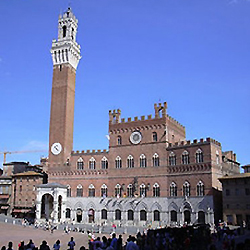 |
| 2nd Day: Florence. Florence, one of the most important centers of art and culture in Europe and the World, situated on the River Arno, birth place of Dante, the father of the Italian Language, the painters Donatello, Cimabue, and Botticelli, the philosopher Machiavelli and architect Brunelleschi as well as historical figures such as Lorenzo the Magnificent, Leone X and San Filippo Neri. Florence possesses a vast wealth of art works by painters such as Leonardo da Vinci, Raffaello and Titian, which can be seen in the Uffizi Gallery, Palazzo Pitti, the Palatina Gallery and the Modern Art gallery. Sculptures by Donatello and Michelangelo are displayed in the Bargello Museum and the Academy gallery where Michelangleo's David can be found.The most important monuments of Florence such as the Church of Santa Maria Novella, the Church of St Maria Maggiore, Palazzo Vecchio (Palazzo della Signoria), Ponte Vecchio, the Boboli Gardens are not to missed. Then there are the numerous libraries such as the Riccardiana and the National Library, considered to be the best in Italy. The Festival dei Popoli and Maggio Musicale Fiorentino are two of the most important cultural events held in Florence. Overnight stay in Florence. |
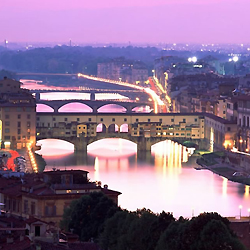 |
| 3rd Day: Pisa. Since ancient times Pisa has been a flourishing city; a Maritime colony in the Roman period known for its conquests, to become one of the four Maritime Republics of Italy; powerful during the Middle Ages under the rule of the Medici who invested Pisa with the splendid architecture which survives in all its glory to this very day. The most prevailing image is that of Piazza dei Miracoli where it is possible to admire not only the Baptistery, but also the Cathedral, the Walls of the Monumental Cemetery and the Leaning Tower, the latter a unique artistic treasure which has become an icon throughout the world. Pisa has many more treasures worthy of note such as the numerous churches, the Porta di St Maria, the Museum of the Sinopie, the Cathedral Museum, the National Museum of St Matteo, Piazza della Sapienza, and the Botanical Gardens. The popular traditions of Pisa testify to the city's ancient and glorious past and promise to leave the visitor with lasting memories. Overnight stay in Milano. |
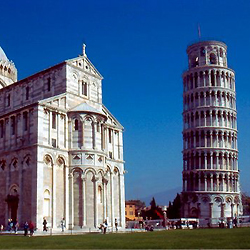 |
| 4th Day: Milano and Lake of Como. Founded in the 400s, Milan has, for centuries been an important commercial and cultural centre. As well as being a city of Internationally recognized economic importance, Milan is a surprisingly green city. There are a number of parks and gardens to be discovered along itineraries which include the town's many monuments and museums. Amongst the important buildings are the Sforzesco Castle, Milan Cathedral, the Vittorio Emanuele II Gallery, the Scala Theatre, the Gallery of Via Manzoni, Palazzo Reale, Palazzo Brera, the Rotonda della Befana, the Casa degli Omenoni, Casa Parravicini, Palazzo delle Stelline, Palazzo Fontana Silvestri, and the Branca Tower..Milan has a number of prestigious museums, these include the Milan Civic Museum, the Cathedral Museum, the Manzoni Museum, the Museum of the Scala Theatre, the Ambrosiana Art Museum, the National Museum of Science and Technology Leonardo Da Vinci, the Brera Art Museum, the Cenacolo Vinciano chapel housing Da Vinci's Last Supper fresco, the Cappuccini Museum of Culture, the San Siro Museum, and the Brera Astronomical Museum. Overnight stay in Bellagio. |
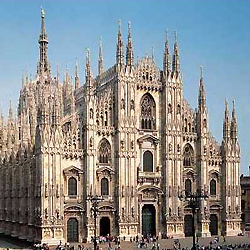 |
| 5th Day: Bellagio and Verona. From Bellagio drive to the city of Verona: Immersed in an enchanting landscape, encircled by hills and crossed by the Adige River, Verona is of ancient origins. The town's political and commercial importance in both Roman and Medieval times, can be seen in the many important monuments, these include the Verona Arena, the Roman Theatre, the Gavi Arch, Porta Corsari, Porta Leoni, the Scaligeri archeological site, the Lamberti towers, and the surviving sections of the ancient city walls of Verona: the Mura di Galieno, and Mura Comunali, found between the Aleardi Bridge and Castelvecchio. With its Arena Foundation, the Civic and Capitolare Library, the Literary Society, the Academy of Agriculture, Science and Literature, Verona University and Conservatory Verona is, internationally of cultural importance. Not to be missed: Juliet's House and her tomb, the Castelvecchio Museum, the Modern Art Gallery, Palazzo Forti, the Archeological Museum of the Roman Theatre, the International Center of Photography Scavi Scaligeri, and the G.B Cavalcaselle Museum of Frescoes. Overnight stay in Venice. |
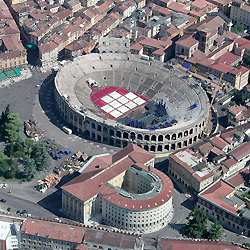 |
| 6th Day: Venice and Murano. On the largest lagoon of the Veneto region, separating the high Adriatic from the coast, one finds Venice. Venice, the world famous city on the sea, is an incredible treasure trove of culture and art, with an endless quantity on historical buildings and numerous museums of great cultural importance. Piazza San Marco, with its Basilica of St Marco and soaring Bell tower is known throughout the world.Not to be missed: the Arsenal, the Fenice Theatre, the Peggy Guggenheim Museum, the Tre Archi Bridge and the Rialto Bridge, the most famous of the Venetian water crossings. Well worth visiting: the Lace Museum, the House of Carlo Goldoni, the Museum of 18th Century Venice, Palazzo Ducale, the Glass Museum, the Galleries of the Venice Academy, the Querini Stampalia Museum, the Bevilacqua La Masa Foundation, the Giorgio Fianchetti Gallery at the Ca' d'Oro, Palazzo Mocenigo, the Fortuny Museum, the Scala Contarini del Bovolo. The Biennale di Venezia is the world famous international contemporary art exhibition held every other year in Venice. Venice also hosts the International Cinema Festival and many other events connected to the arts, architecture, and the performing arts. Overnight stay in Venice. |
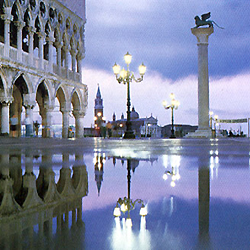 |
| 7th Day: Assisi. From Venice we will drive south through the regions of Veneto, Emilia Romagna, Tuscany and Umbria. Assisi is known throughout the world as the city of St Francis, the monk who spoke to the animals and with God, whose cult has spread across the globe. Linked to the Saint are the Basilica of St Francis, as well as the Eremo of the Prisons and the convent of St. Damian, the place where God spoke to the Monk. As well as these places associated with the saint, there are many other sites which earn Assisi great historical relevance, the Palazzo dei Priori in the Piazza del Comune, the Palazzo del Capitano del Popolo and the temple of Minerva. Descending towards the plains below the city, one finds the large Basilica of St. Maria of the Angels, erected to protect the Porziuncola Chapel.The geographical position of Assisi completes the beauty of the place, dominated by Mount Subasio, a natural oasis rich of holm oaks and oak trees. The visitor is struck by the medieval structure, characterized by the long city wall which protects the heart of the ancient Assisi. Return to Rome. |
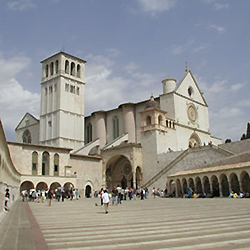 |